

Damion Smy
GWM Cannon Alpha ute, Tank 300 HEV and Tank 500 recalled
13 Hours Ago
The Hyundai Kona N Line Premium tides us over until the full-fat N arrives. This really is the modern 'hot hatch' equivalent in an SUV-dominated landscape.
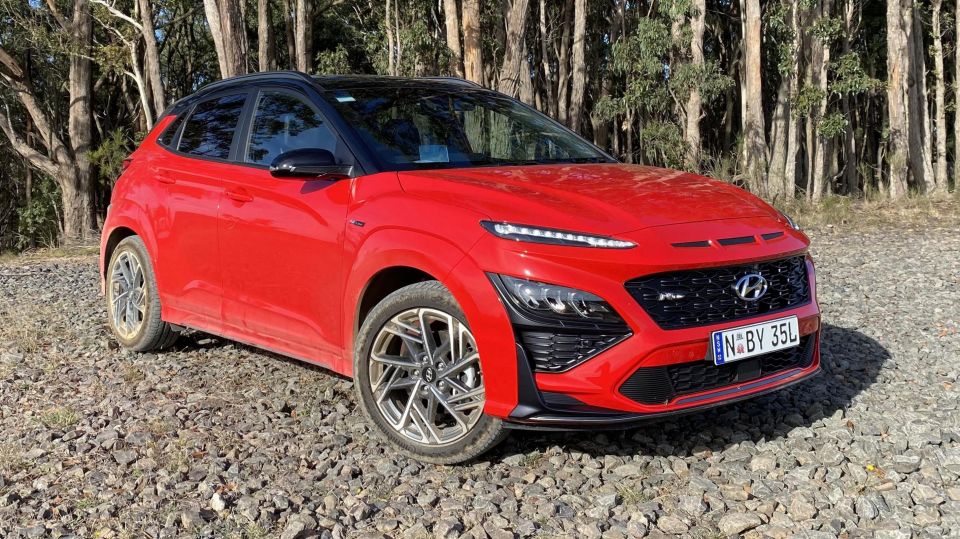
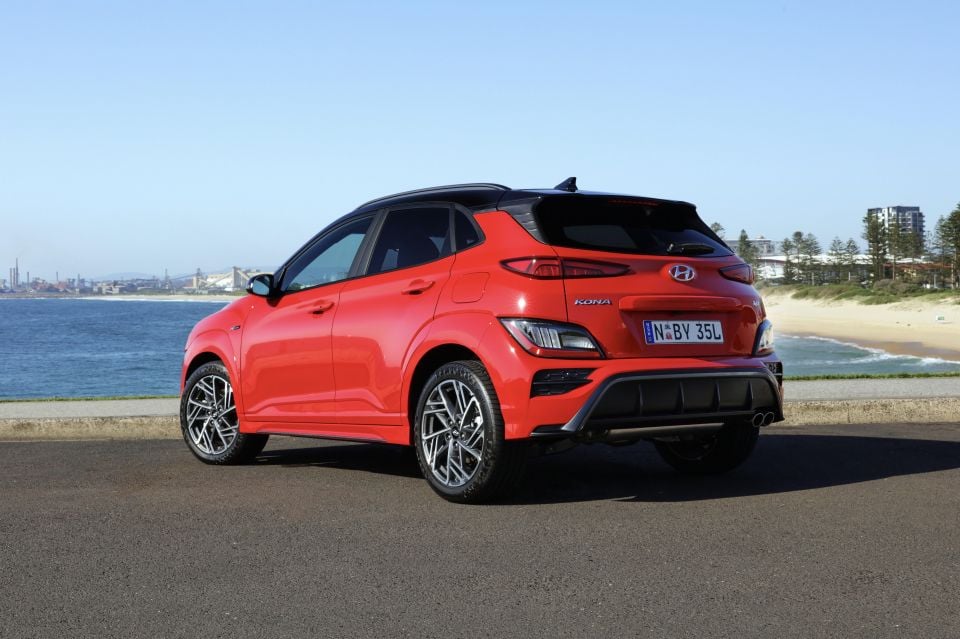

Senior Contributor
New from
$42,400
excl. on-roads

Senior Contributor
New from
$42,400
excl. on-roads


Senior Contributor
New from
$42,400
excl. on-roads

Senior Contributor
New from
$42,400
excl. on-roads
Quickly see how this car stacks up against its competition. Select any benchmark to see more details.
Where expert car reviews meet expert car buying – CarExpert gives you trusted advice, personalised service and real savings on your next new car.
The explosive sales growth of small SUVs has created a sub-field of range-toppers with sporty aspirations.
Think of vehicles like this 2021 Hyundai Kona N Line Premium as contemporary takes on the old hot hatch formula, but with different proportions and elevated seating positions.
This Kona N Line Premium is actually new to the range, having arrived with a wider model upgrade at the end of January 2021. It’s the most expensive and high-tech non-electric Kona you can buy.
This upgrade added a heap of tech features and more power. It also tweaked the design, adding an aggressive new nose flanked by slim headlights, plus different bumpers and wheels.

The sticker price before on-road costs is $42,400, equal to a smidgen under $47,000 on the road. That’s expensive for a Kona, and more than some rivals.
For instance the less powerful Toyota C-HR GR Sport is $42,000 drive-away, a Volkswagen T-Roc 140TSI Sport costs $46,200 drive-away, and the related Kia Seltos GT-Line is $43,790 drive-away.
You can buy a Kona N Line without the Premium tag that runs the same drivetrain but offers fewer luxury features for $40,400 drive-away.
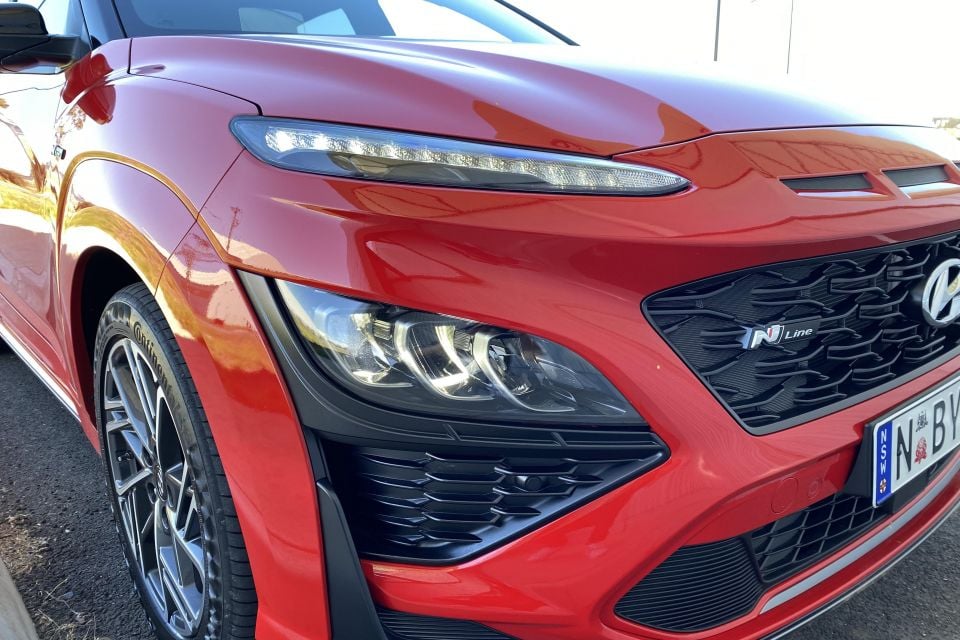

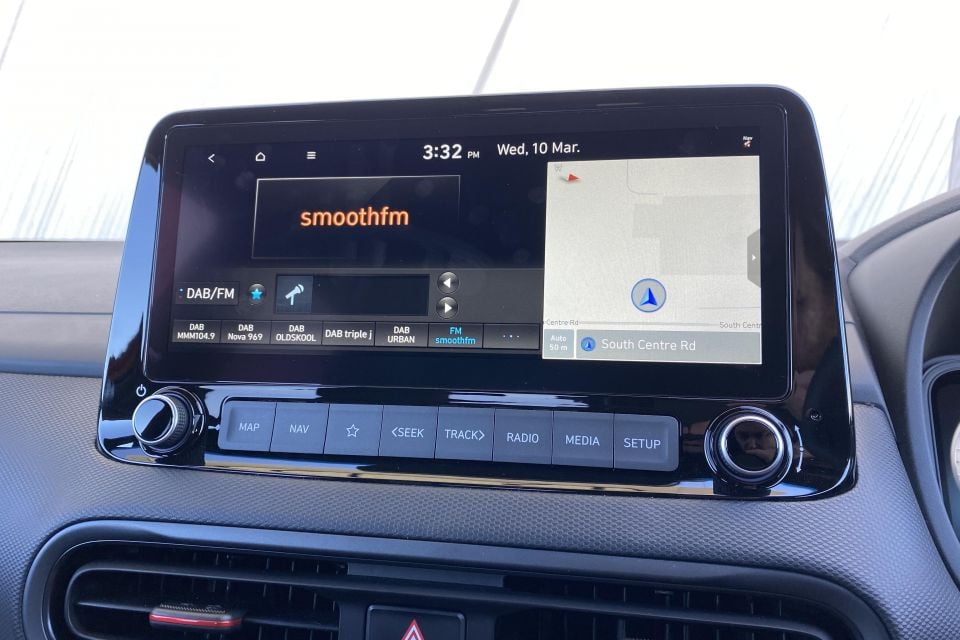
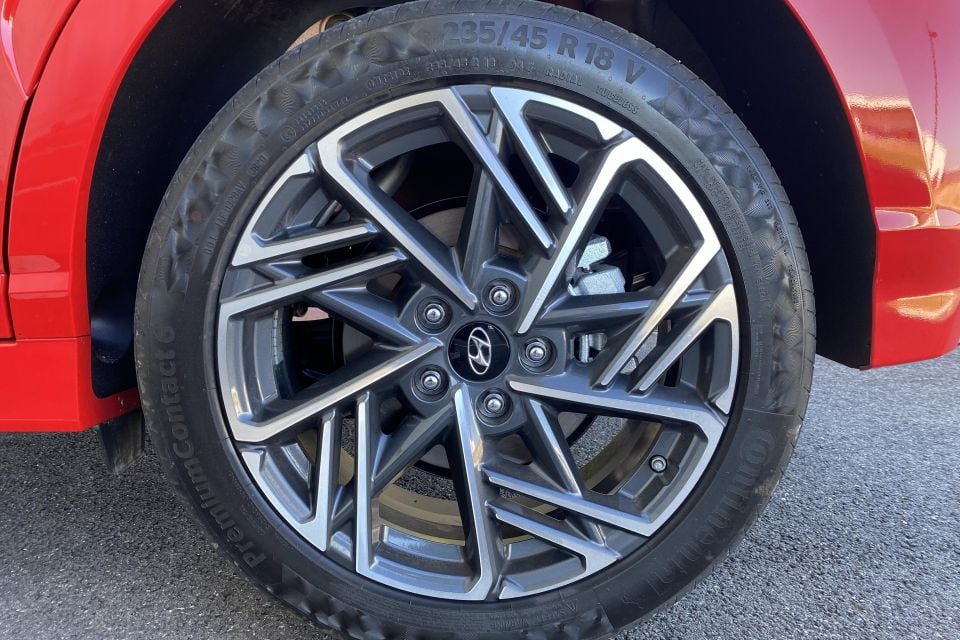
Buy your new car without the stress. It's fast, simple and completely free.

Great service from Travis and team, second time I have used this business would not hesitate to recommend them to anyone
Craig C.
Purchased a Ford Ranger in Sunshine Coast, QLD
CarExpert helped Craig save thousands on his Ford Ranger, now let us save you on your next new car.
Find a dealIt certainly comes well equipped.
On the outside you get 18-inch alloy wheels shod with Continental tyres, multi-link rear suspension in place of the base grades’ torsion beam, dusk-sensing LED headlights, LED tail lights and running lights, a tyre-pressure monitor, privacy glass, acoustic windscreen film, proximity key, rain-sensing wipers, parking sensors front and rear, and a glass roof or two-tone paint.
Inside there’s leather trim, powered front seats with heating and ventilation, a heated steering wheel, heated rear outboard seats, climate control, ambient lighting, a 10.25-inch digital instrument cluster, wireless phone charging, a head-up display, a 10.25-inch central display with sat-nav and phone mirroring, and a Harman/Kardon sound system.
It also has a remote start function controlled by the key fob.
Seven exterior paint colours feature, including Atlas White, Dark Knight, Phantom Black, Surfy Blue, Dive in Jeju (blue), Ignite Flame, and Pulse Red.
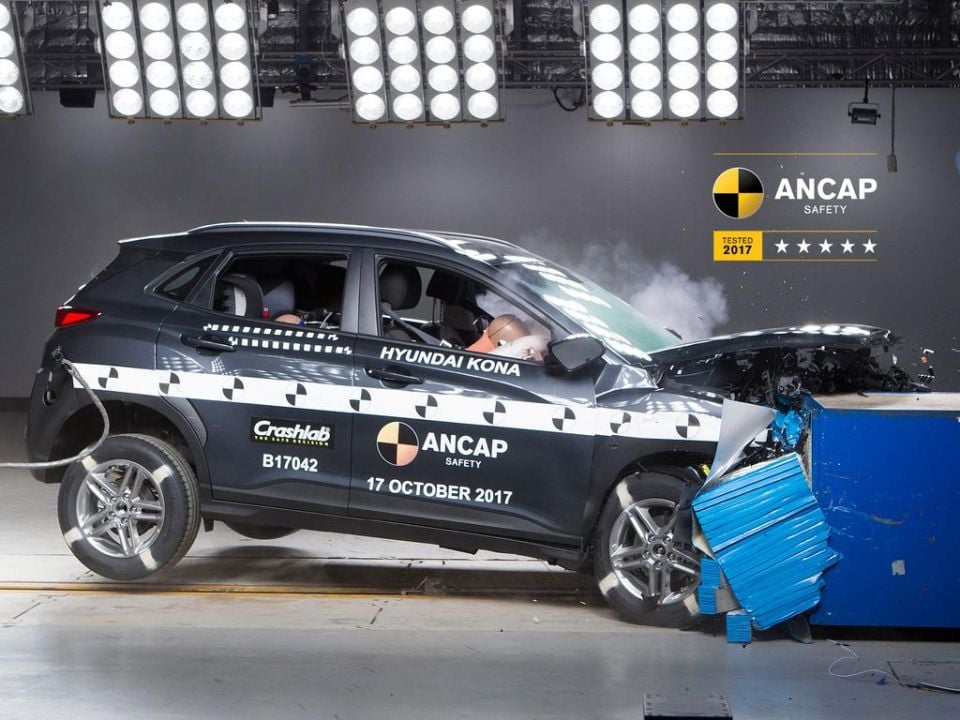
Crash-tester ANCAP awarded the Kona five stars out of five in 2017.
Standard safety includes dual front, front-side, and full-length curtain airbags.
Active safety includes forward autonomous emergency braking (AEB) using camera and radar sensors, lane-keeping assist with steering, a driver-attention monitor, active cruise control with stop-and-go, active blind-spot assist, rear cross-traffic alert, leading-vehicle-start alert, and parked Safe Exit Warning which beeps if you’re about to open your door into traffic.
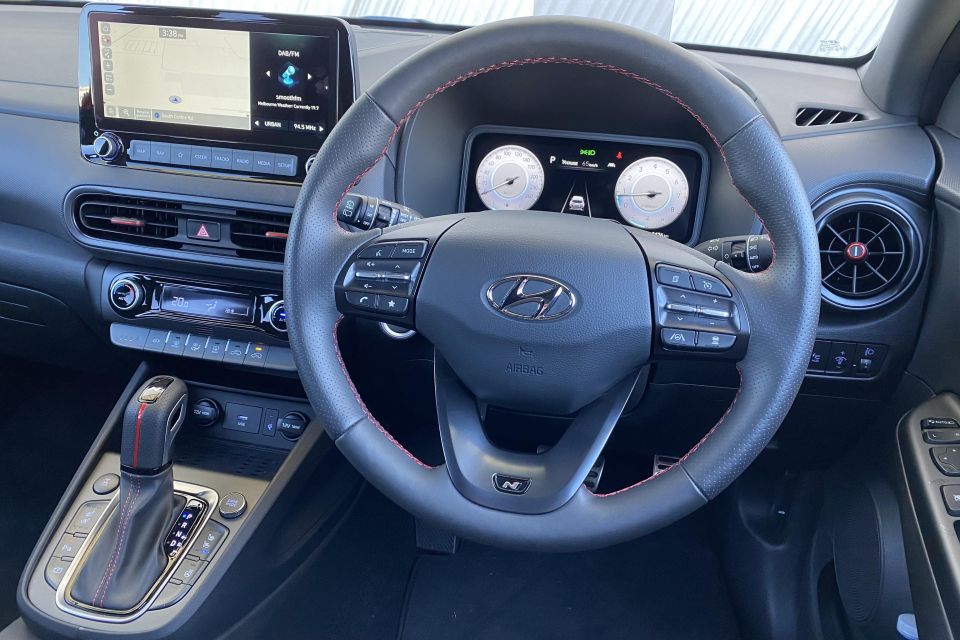
You sit a smidgen higher than in a normal hot hatch, but not by much. There’s plenty of (chunky and red-stitched) steering wheel adjustment, and the electric/heated/ventilated seats are supportive and well equipped.
The digital instrument cluster adds a contemporary sheen and changes its design depending on your driving mode. You can view your speed on a digital speedo in the centre, or instead see turn-by-turn navigation prompts.
This cluster is augmented by a flip-up glass piece atop the dash upon which a head-up display (HUD) projects speed and navigation information. I’d prefer a windscreen-projecting unit but it’s better than not having a HUD at all.
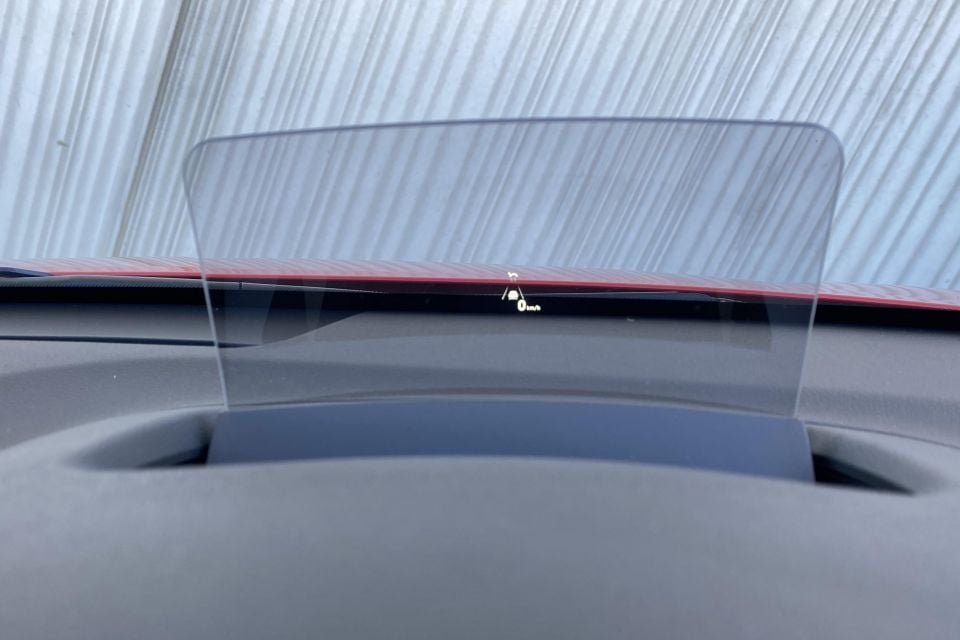
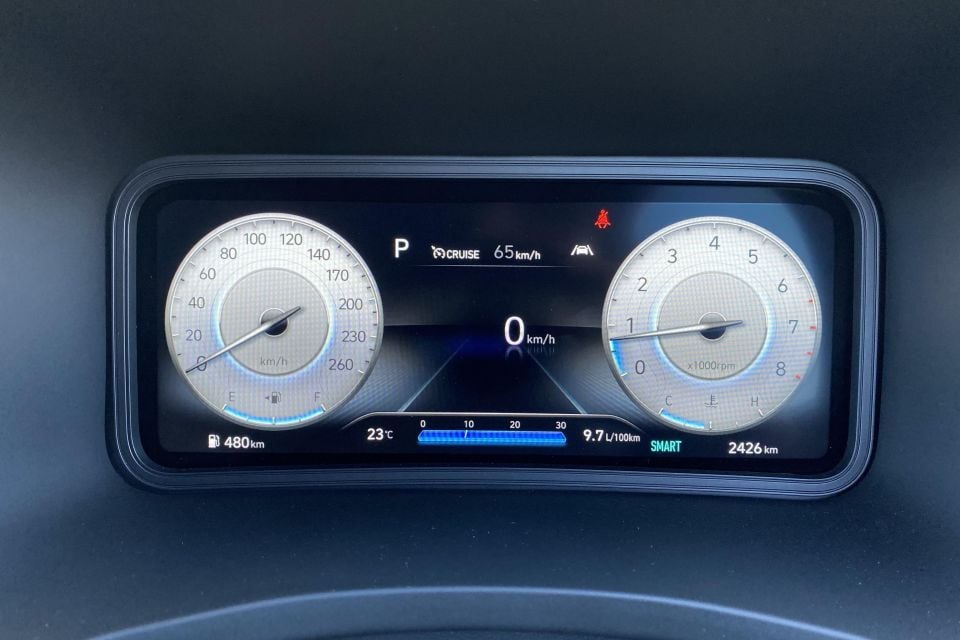
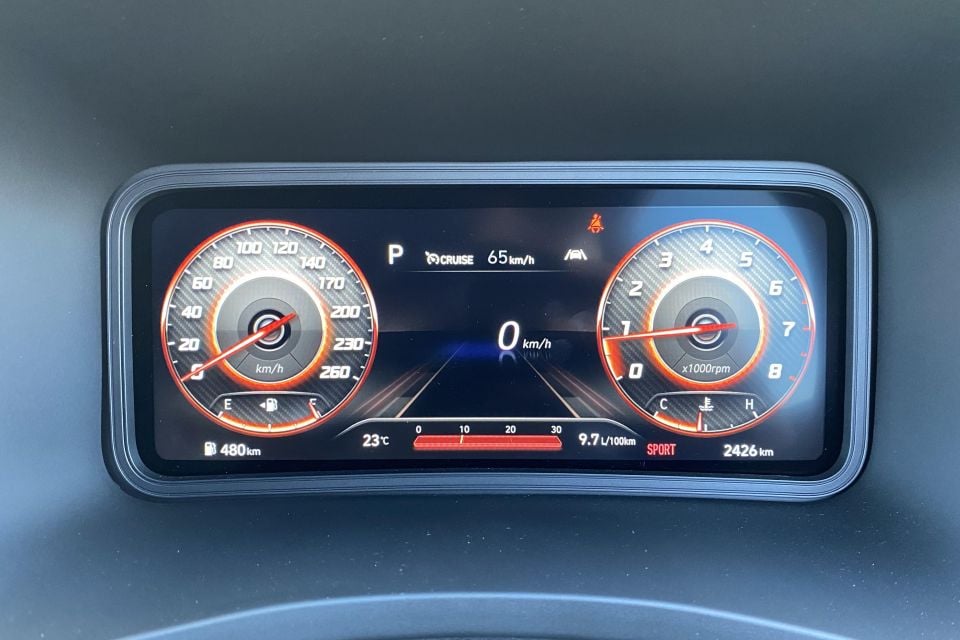
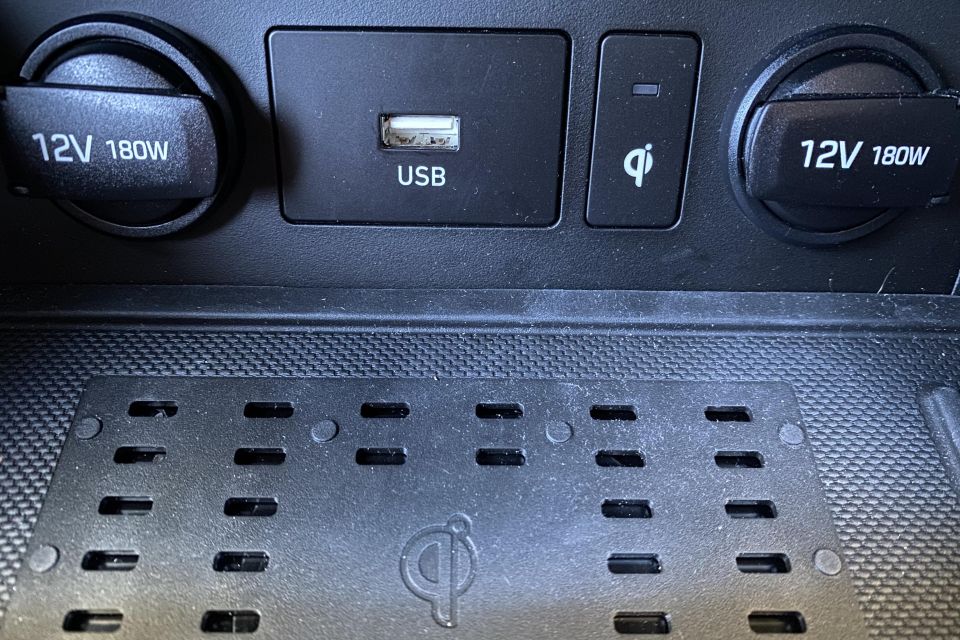
The centre touchscreen is bigger than is common, and runs Hyundai’s latest and greatest infotainment system. The display allows you to view two screens at the same time – for example navigation and your media menu – and is both quick to load and programmed with slick graphics.
The maps are large and detailed, the wired phone mirroring worked without flaw (unlike Hyundai’s buggy wireless CarPlay head unit), and there are nifty touches like ambient cabin lighting and Sounds of Nature – a menu that pipes ambient noise through the speakers.
On that note, the Harman/Kardon audio system proved to be excellent.
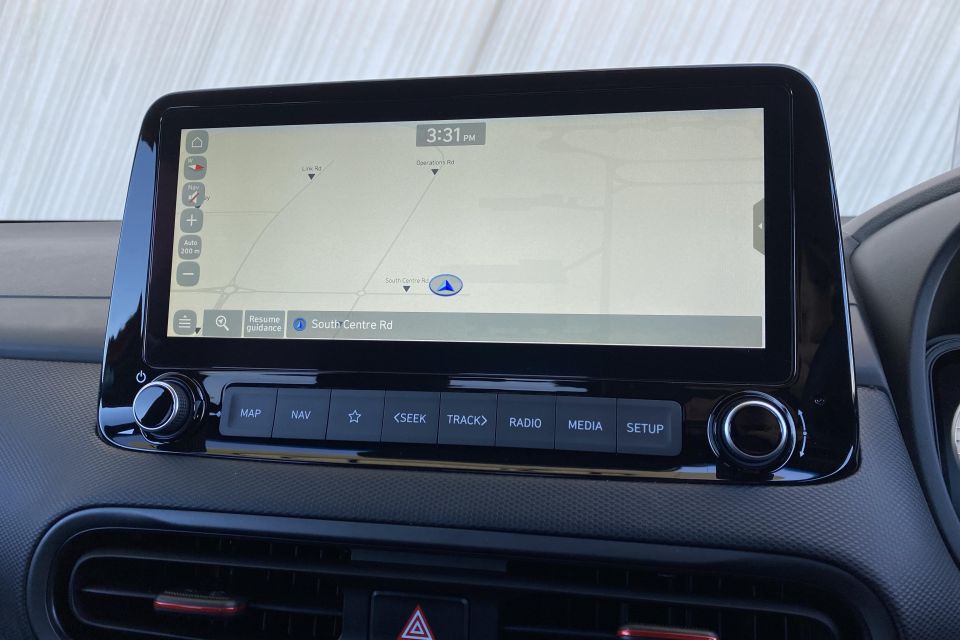
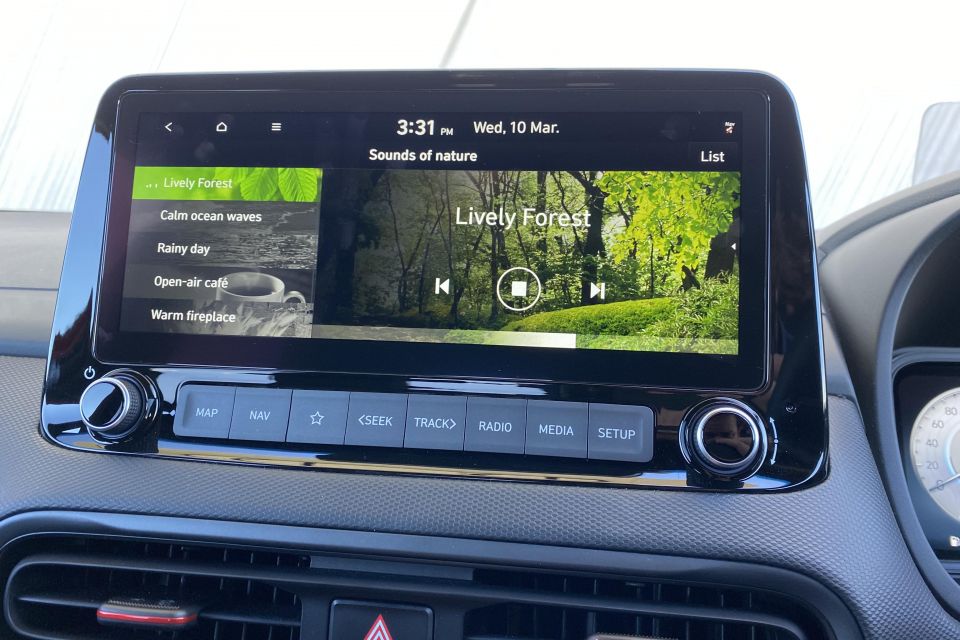

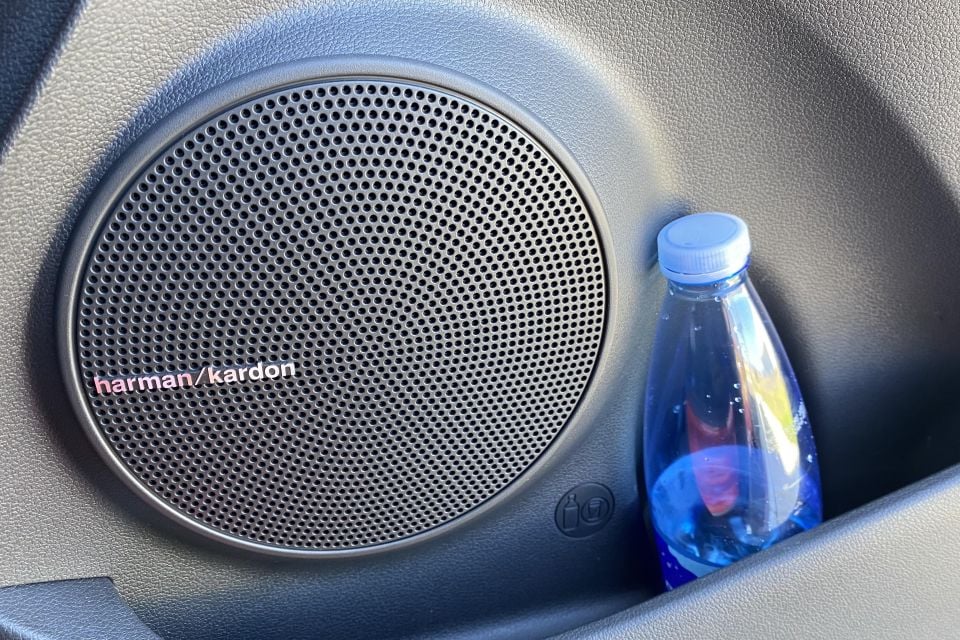
In terms of materials, it’s certainly not a premium-feeling cabin but Hyundai has made some effort to liven up the palette and soften the touchpoints, and the fit and finish seemed fine.
Storage is handled by bottle-friendly door bins, a moderate centre console, two shallow cupholders, a cubby under the fascia with a Qi charging pad, and a glovebox.
While the Kona is technically a SUV, it’s not particularly spacious in the back seats. At 4215mm long with a 2600mm wheelbase, it’s quite a bit shorter than a Hyundai i30 for context.
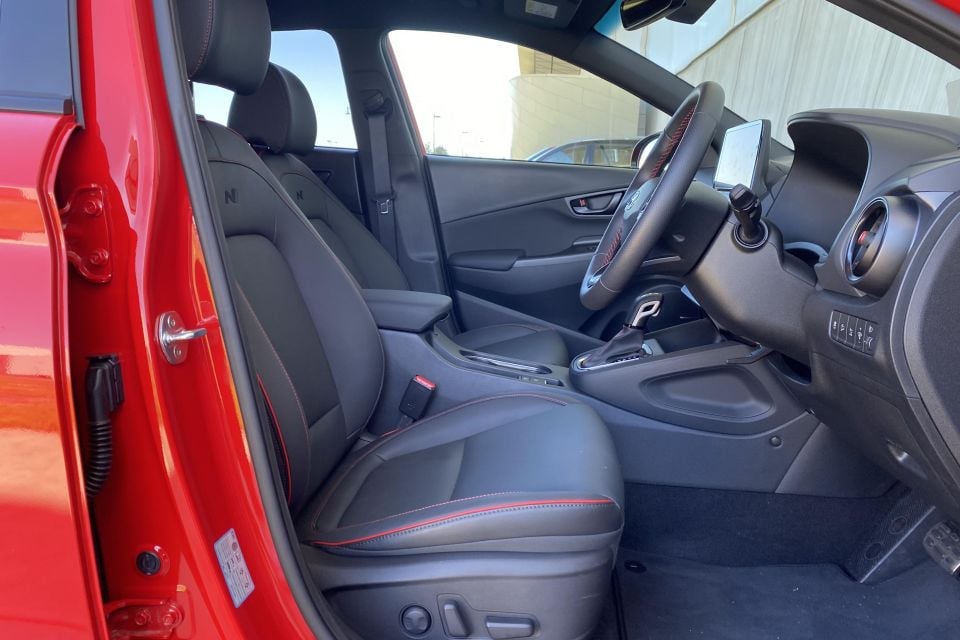
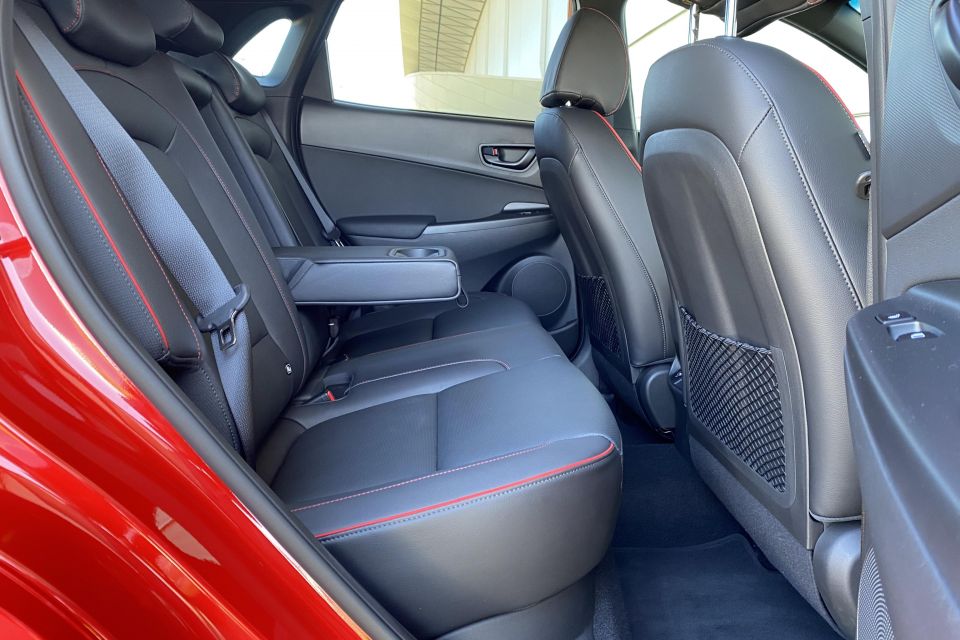

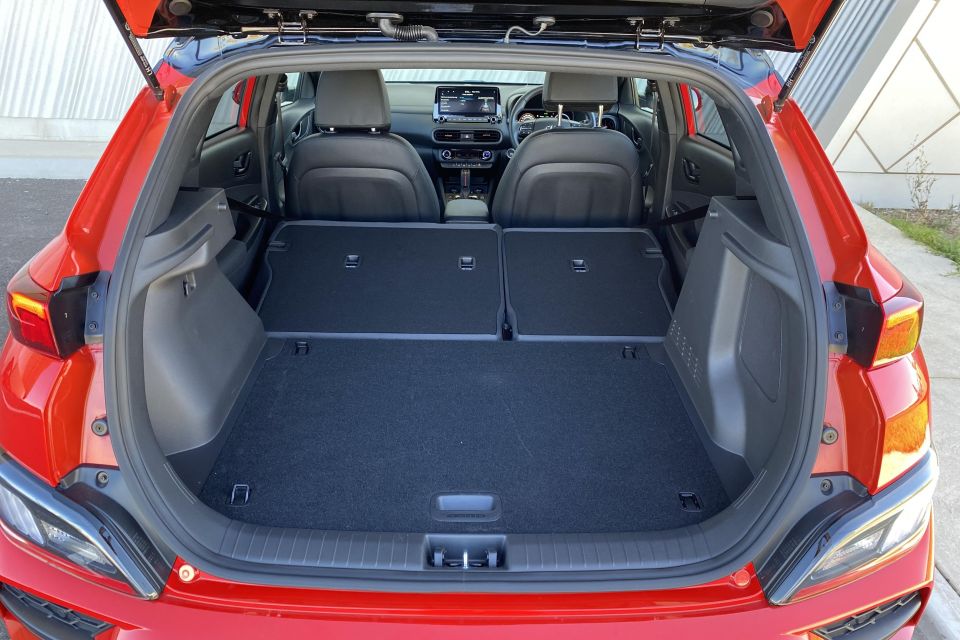
I’m 194cm and was crammed right up, though more typically-sized occupants and children will be fine.
Amenities include a centre pull-down cupholder and armrest, heated back seat bases for outboard occupants, and a USB charging point. No vents though.
The boot capacity is a hatch-like 374L and there’s a space-saver spare wheel.
The Kona is actually less practical than an i30 or Corolla, though more spacious than a coupe (which it clearly wants to be based on the design).

A 1.6-litre turbocharged petrol four with continually-variable valve timing making 146kW of power at 6000rpm and 265Nm of torque between 1600 and 4500rpm. This engine in previous Kona iterations made 130kW/265Nm.
It’s mated to a seven-speed dry dual-clutch transmission(DCT) and on-demand all-wheel drive (AWD).
Hyundai claims combined-cycle fuel consumption of 6.9 litres per 100km, and it can run on 91 RON fuel. In stop-start driving you should expect a figure around 8.2L/100km.
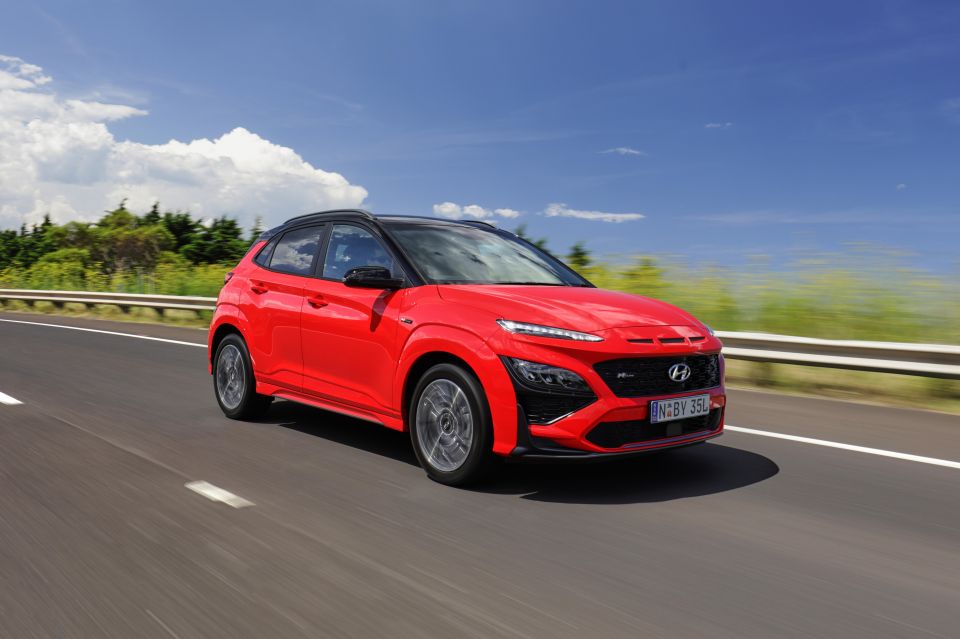
It’s quite a characterful little engine with appreciable shove once you’re rolling, and a crisp exhaust note with the occasional turbo flutter even making its way into the cabin. Well, at least it sounds like one.
The DCT is a mixed bag. Its shifts are customarily rapid and any hint of indecisiveness right off the mark is kept at bay for the most part thanks to the fitment of an Auto Hold anti-creeping function.
However, the gear shift from first to second under moderate throttle in either the ‘Smart’ or ‘Sport’ driving mode presets was often strangely clunky in our test car. It would shift into gear and send a real ‘thunk’ through the cabin.
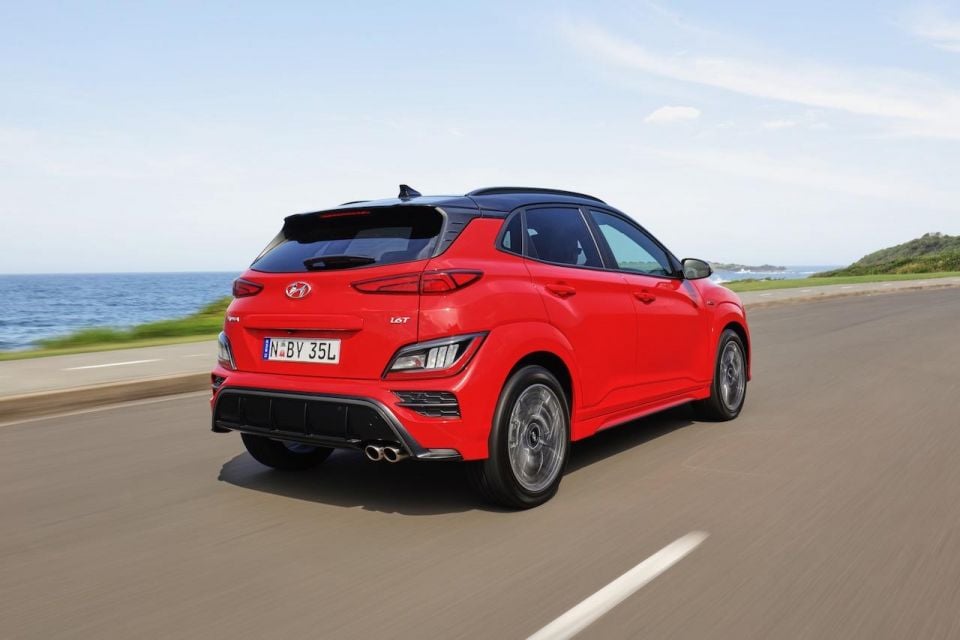
It’s also not the easiest car to launch off the mark, which meant I failed to get a 0-100km/h time under 8.2 seconds on various dry runs. In fairness that isn’t exactly slow.
It’s a pretty agile little car, and as the design suggests it stays quite flat in corners. At 1400kg it’s not particularly heavy, and the AWD means you rarely feel short on traction. Those Continental PremiumContact 6 tyres are also pretty premium rubber.
The performance N Line swaps out the base cars’ rear torsion beam suspension in favour of a multi-link setup enabling more road contact, and the front ventilated brake discs grow from 280mm diameter to 305mm.

It’s not quite a proper hot hatch, but it’s certainly nippy. I also didn’t mind the ride, which is firm but not brittle. Hat tip to Hyundai Australia’s suspension tuning team.
There’s a fair bit of tyre noise at speed though: 72dB average at 100km/h on a typical B-road. A sound-insulating acoustic laminated windscreen minimises wind noise generated during driving, but road roar isn’t kept at bay.
The active safety systems worked, however I did note a tendency on the part of the active lane-keeping aid to continually make tiny course corrections when you’re driving in a straight line, meaning you feel the wheel trying to move in your hands.
Hyundai’s lane-keeping systems are usually among the very best out there, but I think this one needs some recalibration.
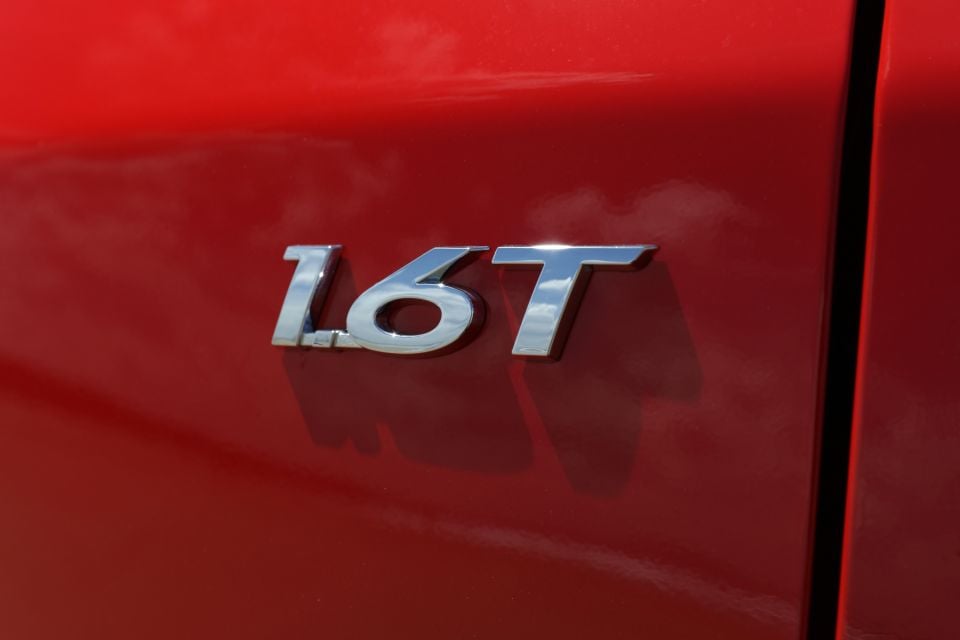
Hyundai Australia’s warranty runs for five years with no strings attached.
There’s capped-price servicing, which will have you paying $957 for a three-year plan, $1276 for a four-year plan, and $1595 for a five-year plan.
The intervals are 12 months or 10,000km – that’s 5000km shorter than we’d like.
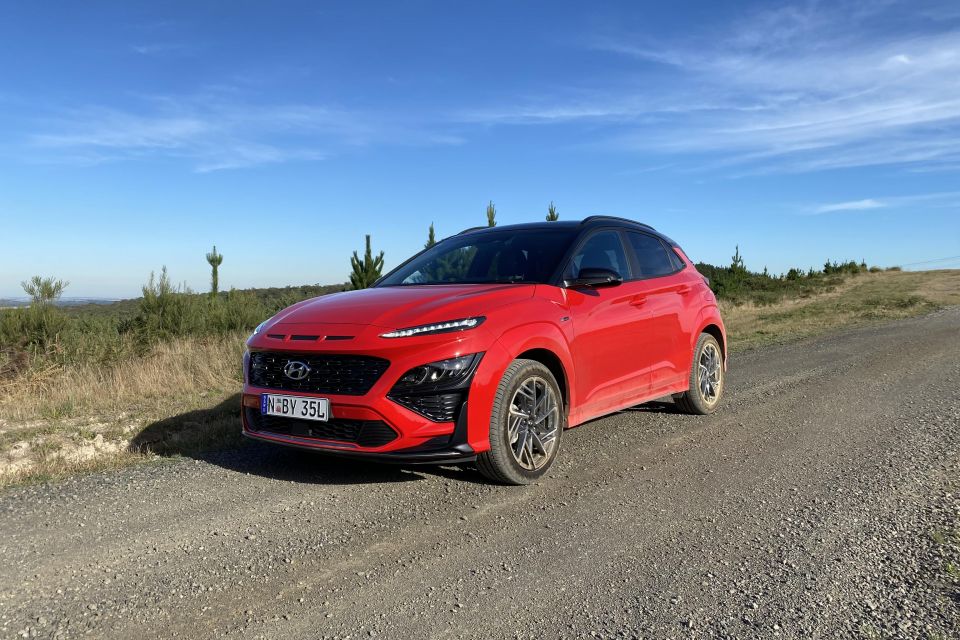
Where expert car reviews meet expert car buying – CarExpert gives you trusted advice, personalised service and real savings on your next new car.
So what do I make of the hottest (for now) Hyundai Kona? It looks slick, has plenty of punch, handles rather like a car, and is brimming with contemporary cabin tech and features that go a long way to justifying the steep price.
But there are flaws. The DCT in our test car had a clear flaw with its upshifts from first to second, the steering assist was a little over-active, and the road roar levels felt a touch high.
It also has short service intervals and remains pretty pokey inside.
Personally I’d suggest the Hyundai i30 N Line Premium is a better proposition, and if you want a warmed-up SUV I’d say the mechanically similar Kia Seltos GT-Line is the one to go for. Unless, that is, the Kona’s design simply bowls you over.
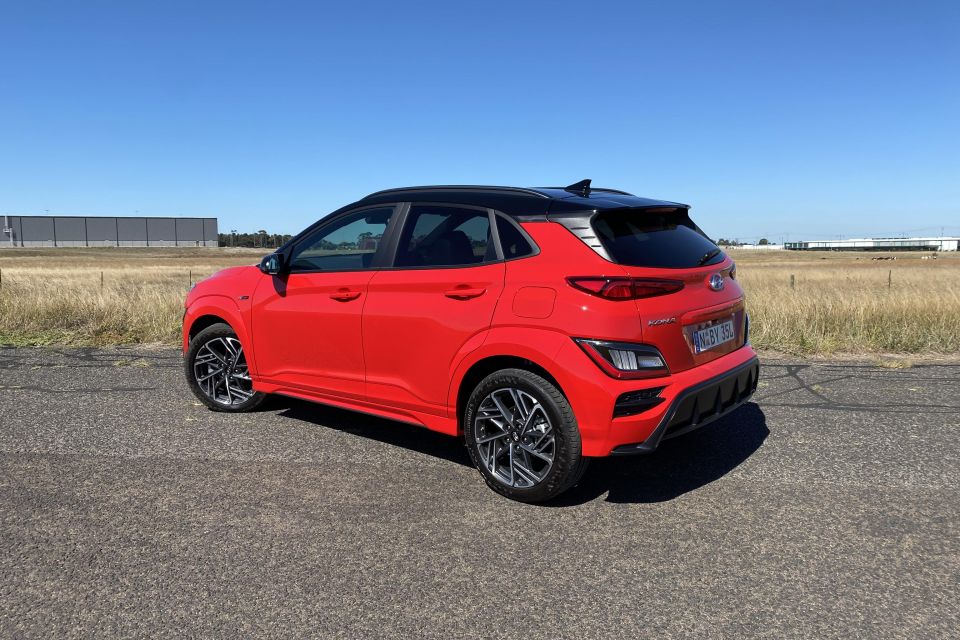
Click the images for the full gallery
Where expert car reviews meet expert car buying – CarExpert gives you trusted advice, personalised service and real savings on your next new car.


Damion Smy
13 Hours Ago


William Stopford
15 Hours Ago


Matt Campbell
23 Hours Ago


William Stopford
2 Days Ago


CarExpert.com.au
5 Days Ago


Damion Smy
5 Days Ago